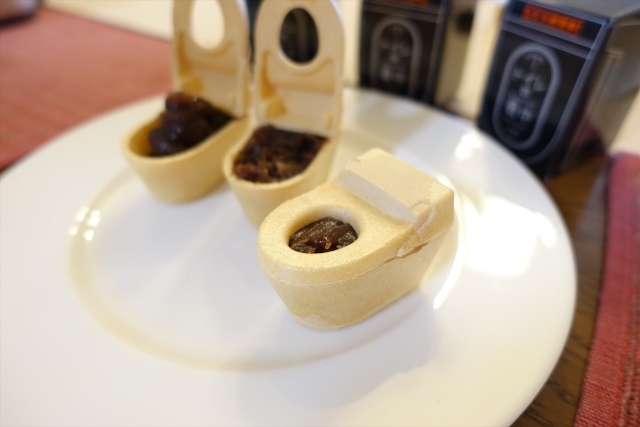
The perfect sweet for a potty mouth.
Our Tokai-based Japanese-language reporter Haruka Takagi had been feeling down in the dumps lately, so she decided to cheer herself up by taking a trip out to Aichi Prefecture, which isn’t far from where she lives.
While she was there, she came across an unusual traditional Japanese sweet that put the spring back into her step and a smile right back on her dial. In fact, it made her laugh so much that she decided to share her secret find with all of us, and now we’re smiling too because it’s a serious treat with a serious sense of humour.
▼ Say hello to the Toilet Monaka.
As far as traditional Japanese sweets go, monaka are right up there at the fashionable, classy end of the spectrum, consisting of adzuki red bean paste sandwiched between two crisp, light wafers made from mochi rice. They’re usually square or triangular, or shaped like beautiful flowers, but the one that Haruka found is…shaped like a toilet.
That doesn’t mean the quality of the treat has been flushed down the drain, however, as the monaka and red bean paste are packaged separately and designed to be combined by the customer before eating. This separate packaging is always the hallmark of a good-quality monaka as it ensures the wafer stays crisp, delivering classy, fresh flavours, despite the toilet humour.
The sweet comes with instructions on how to properly assemble it, so Haruka took note of the advice provided in order to create a realistic-looking visual.
However, when she tried to create a beautiful turd coil in the the toilet bowl, it turned out to be more difficult than expected.
Still, once she was done, the end result was spectacular, both with the toilet lid up and down.
The fun continued when it came to eating the sweet, as she’d formed such an intimate connection with her creation while assembling it that the thought if it being a real toilet was front-and-centre in her mind.
She couldn’t hold back her smile when she bit into it, though, and she was pleasantly surprised to find that it tasted incredibly delicious! It was fresh and classy, much like a top-of-the-range toilet model.
▼ Who knew a toilet could taste so good?
Looking at the packaging, Haruka could see the reason why her toilet tasted so delicious — it had been created by Ohkuramochi, a highly esteemed and longstanding Japanese confectionery shop in Aichi Prefecture.
The company who requested the sweet be made was LIXIL, formerly known as INAX, which is a Japanese manufacturer of building materials and housing equipment, including bathrooms and yes, toilets.
▼ Haruka had bought the sweet at LIXIL’s INAX Live Museum in Aichi’s Tokoname City.
The museum shop only started selling the Toilet Monaka this month, and it’s already created a huge buzz online. We spoke to a spokesperson at the museum to find out more about how they were able to make the sweet look so realistic and impactful, and the first thing they said was:
“I think it’s precisely because we’re a toilet manufacturer that we were able to achieve that.”
They went on to comment on the company’s surprise at the public’s response to the sweet, saying:
“Since the appearance of the sweet is so realistic, we anticipated we would get some sort of response (from the public), but we didn’t expect it to be this great.”
Haruka also found out that the reason why the shape of the Toilet Monaka looks so real is because the design was gleaned from the CAD (computer-aided design) used by the technical team who usually designs toilets.
▼ There’s a lot of serious planning behind this fun sweet, which retails for 324 yen (US$2.96).
The Toilet Monaka plays on the double-reading of “最中”, which can be read as both “monaka” and “saichu” (meaning “the height of”, or “in the middle of”), which means the “Toilet Monaka” can also be read as “mid-toilet”.
Originally devised as a special souvenir for visitors at the LIXIL Enokido factory in Tokoname, which manufactures toilets, and where general tours are not possible, LIXIL decided to sell the sweet to the general public, saying:
“We wanted people to know more about Tokoname, the city of pottery, so we started selling it. We hope people will come to Tokoname and become interested in pottery through this product.”
Now that our reporter was here in this famous pottery district, she decided to take a closer look at the INAX Live Museum, which is like a pottery theme park with its many pottery-related exhibits. There are also sophisticated buildings and well-maintained garden areas to explore, so if you’re planning a visit, Haruka says you should head to this main building first, where you can pay the 700-yen (US$6.38) admission fee to explore all the areas inside.
According to Haruka, the admission fee is almost too cheap for the huge amount of exhibits included in the price. Inside the main building, for example, is a real kiln that was once used to make clay pipes, which was a major industry in Tokoname in the past.
The lustre of the clay pipes made at that time was not due to glaze, but the chemical reaction of the components present in salt and clay. Because of this, the inner wall of the kiln is also as glossy as the surface of a clay pipe.
Another highlight at the museum you won’t want to miss is the chance to see a 4,700-year-old Egyptian tile, said to be the world’s oldest tile, located in the Tile Museum.
There’s also the rare chance to see the backside of old tiles, and you’ll find a wide range of tiles everywhere, including inside the public bathrooms.
▼ This is a replica of a tiled fireplace used in 18th century Europe, which is believed to have been influenced by Chinese ceramics.
If you get hungry during your museum visit, you can stop by the restaurant to enjoy pizza baked in a kiln…
▼ … And you can step inside an actual kiln, which has a length of 80 metres (262.5 feet).
The Terracotta Park is a lovely place to stroll after lunch, where you can see how pottery was used to decorate the outer walls of buildings.
This wall was taken from the Ministry of Home Affairs when it was demolished in 2001 and it’s now preserved here to showcase its beauty and craftsmanship.
▼ These stone demons were removed from the Osaka Building in 1986.
Another highlight you shouldn’t miss is this old toilet bowl collection, which shows how toilets were once decorated for elite members of society.
The toilet below is a rare squat-style design with both a large and small cavity. However, it didn’t end up becoming popular, as it was said to be difficult to use.
Depending on when you visit, you might be able to catch a limited time exhibition at the museum, like this one called “Disconnect/ Connect [Asao Tokolo x NOIZ] Geometric Pattern Rhythm, Tiling Universe“, which is on until 12 October.
▼ Asao Tokolo recently designed the logo for the Tokyo 2020 Olympics and Paralympics.
▼ Before you leave the museum, don’t forget to pose for a commemorative photo with a giant mud ball!
And of course, you’ll want to grab a few of those Toilet Monaka sweets for yourself and your friends back home. The museum shop that sells them can be seen on the left-hand side of the photo below, while the World Tile Museum is in the middle and the restaurant is on the right-hand side of the image.
▼ There are many other toilet-related goods and souvenirs to tempt you in the museum shop, including mini porcelain thrones.
That was just a whirlwind overview of what the museum has to offer, and Haruka was surprised to find herself enjoying it as much as she did. Not only did she get to learn a lot about toilets, she also expanded her knowledge on tiles and ceramics, and even got to see the works of an Olympic logo designer up close!
It was a great day out, and Haruka is now in much better spirits after her trip to the land of tiles and toilets. If you’re ever looking to lift your mood, she highly recommends chomping into a toilet, and if you can’t make the trip out to Aichi Prefecture, you can always try sipping on sweet toilet water or biting into these chocolate toilets from Toto.
Museum Information
INAX Live Museum / INAXライブミュージアム
Address: Aichi-ken, Tokoname-shi, Okueicho 1-130
愛知県常滑市奥栄町1-130
Open: 10:00 a.m.-5:00 p.m. (last entry 4:30 p.m.)
Website
Related: INAX Live Museum
Photos: ©SoraNews24
● Want to hear about SoraNews24’s latest articles as soon as they’re published? Follow us on Facebook and Twitter!
[ Read in Japanese ]


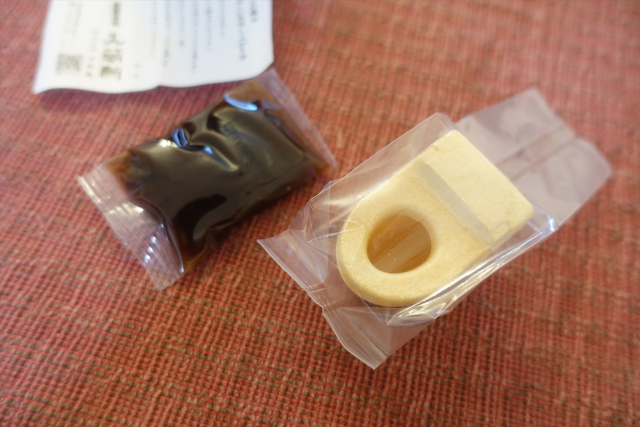
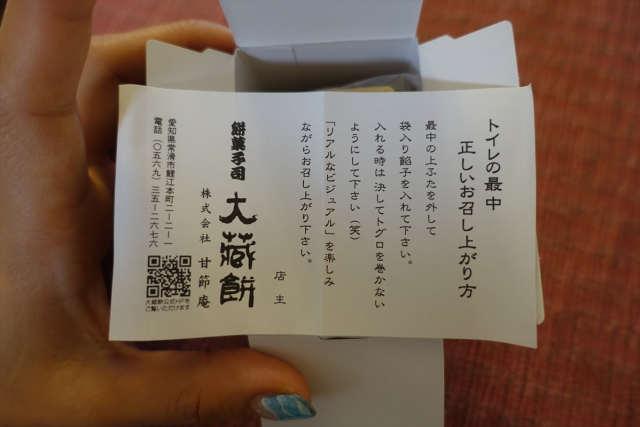
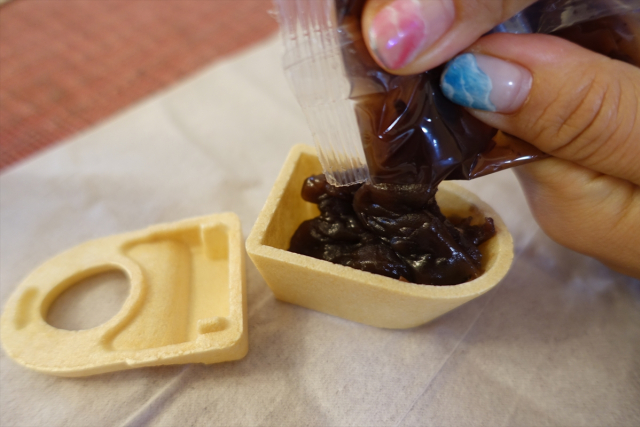

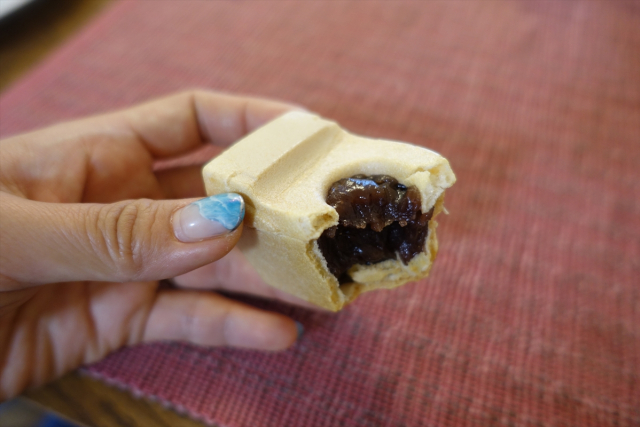
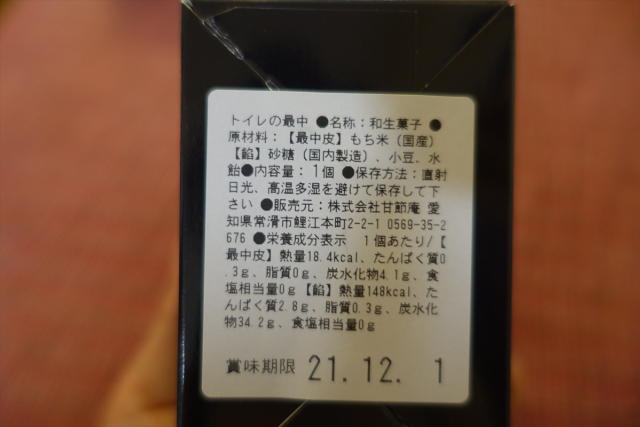
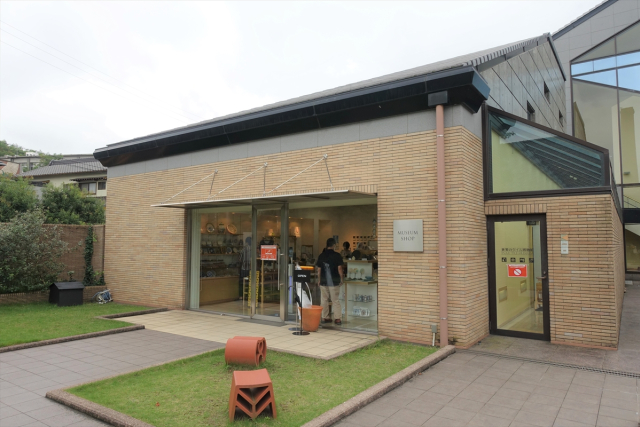
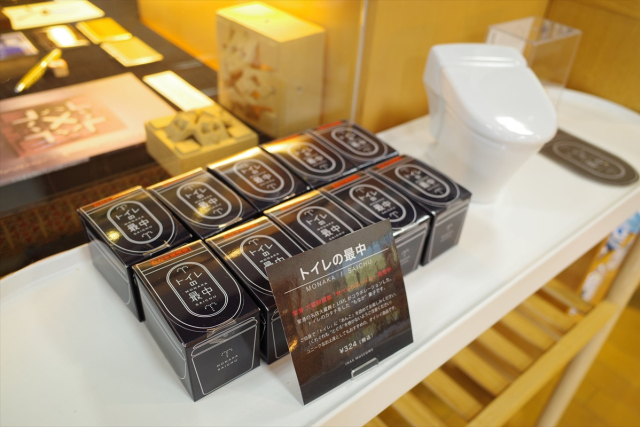
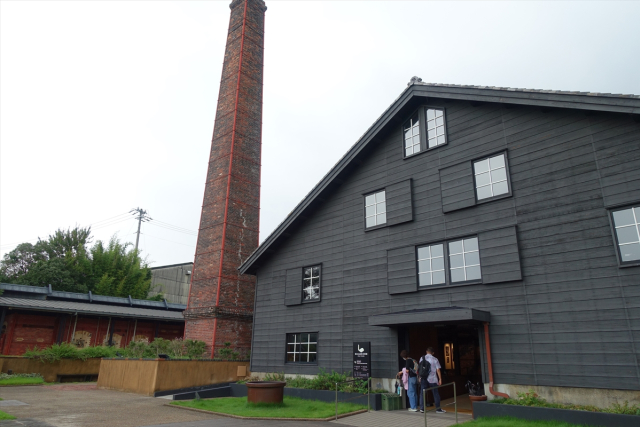

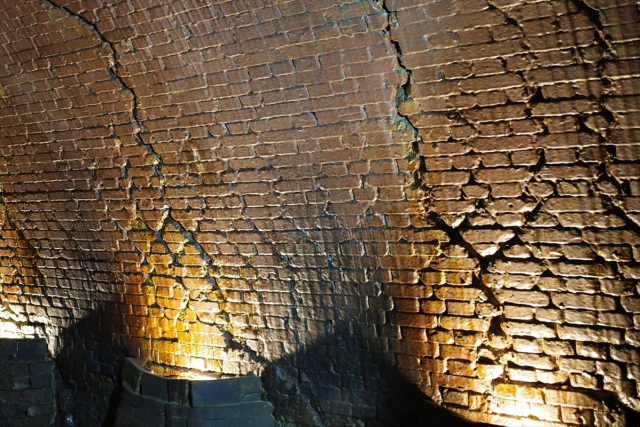
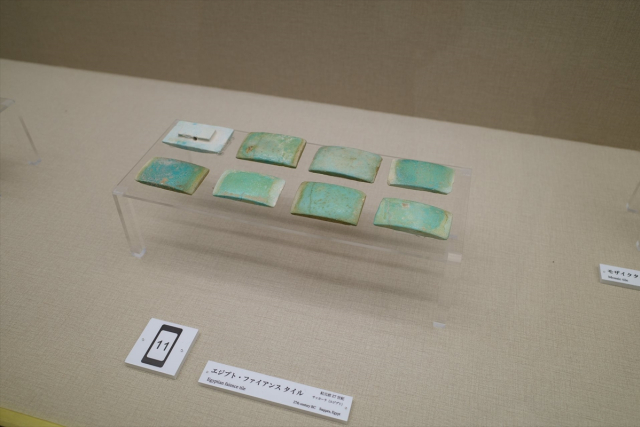
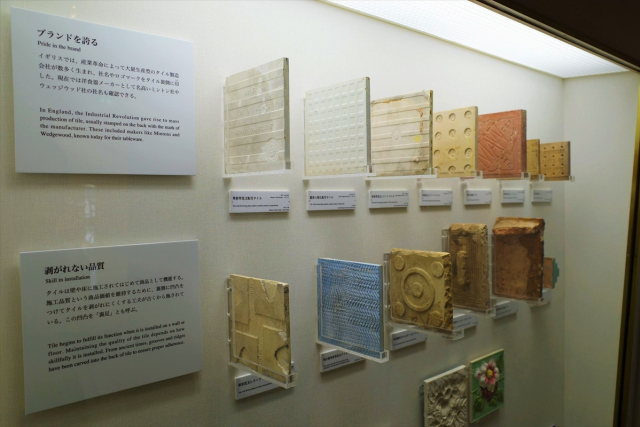
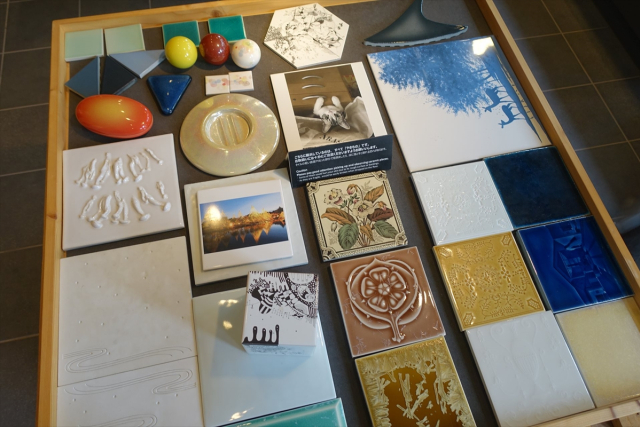
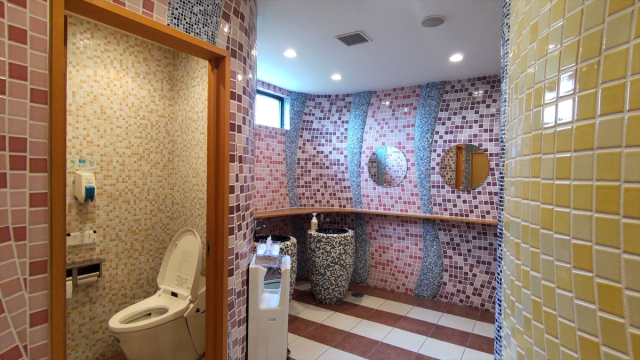
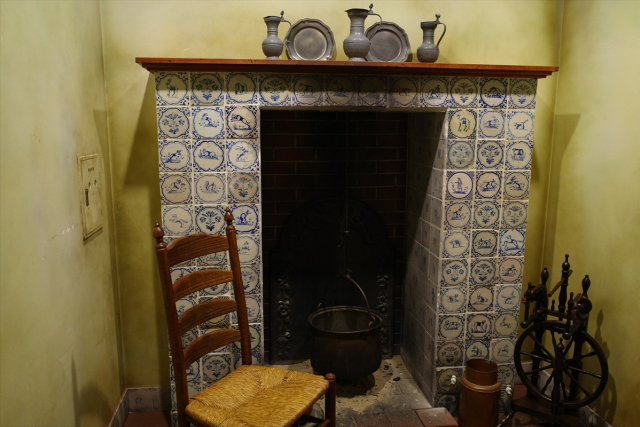


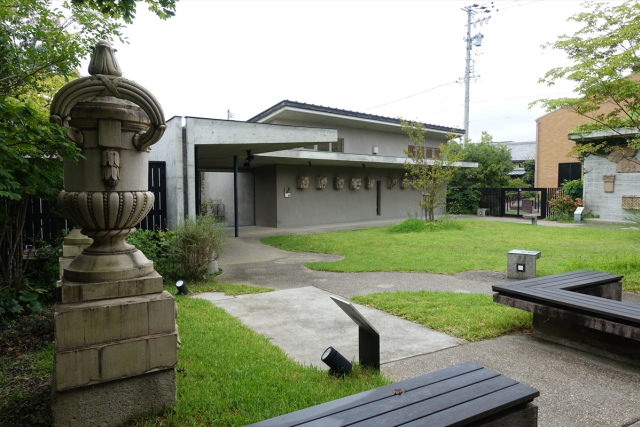

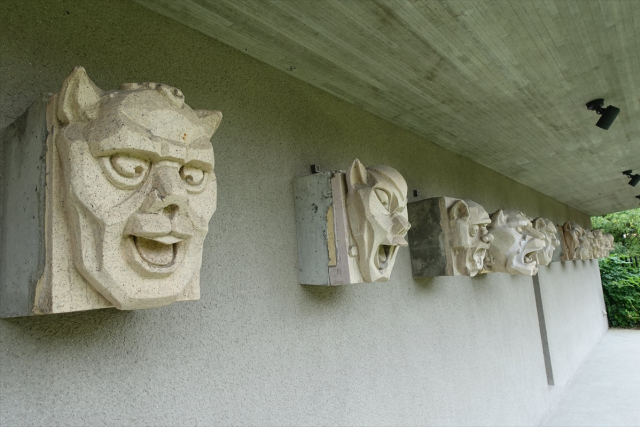
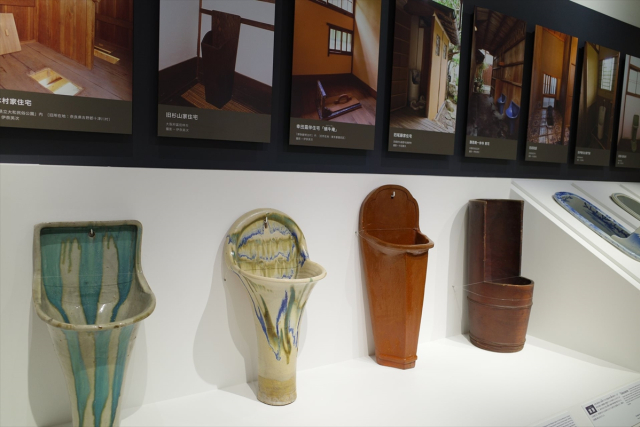
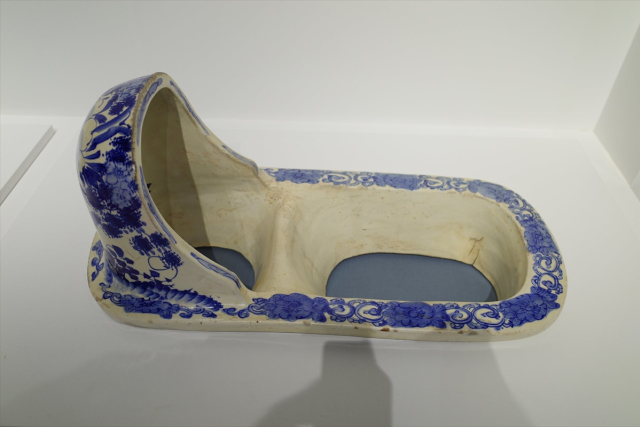
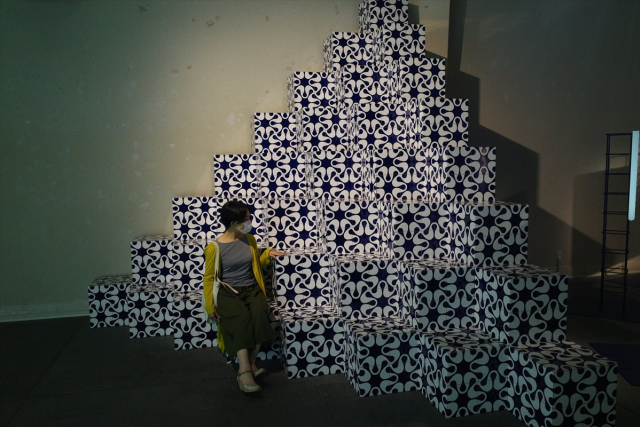
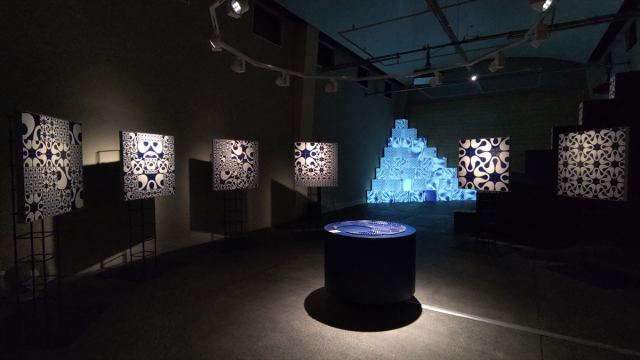
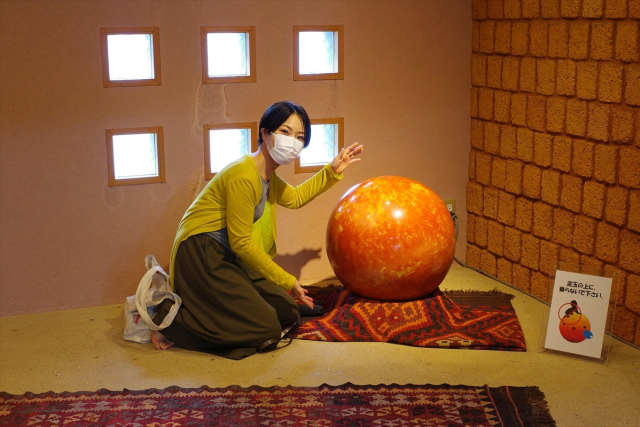
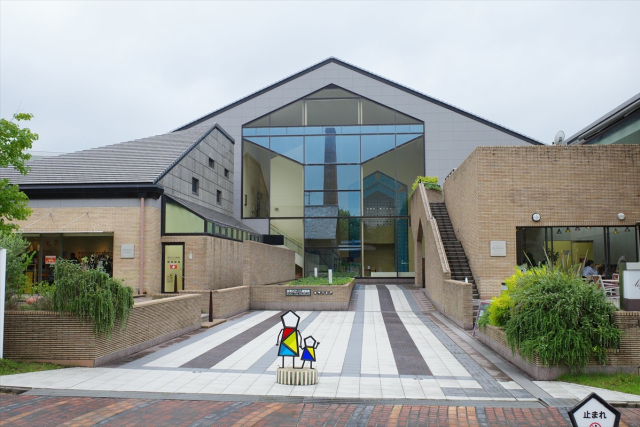
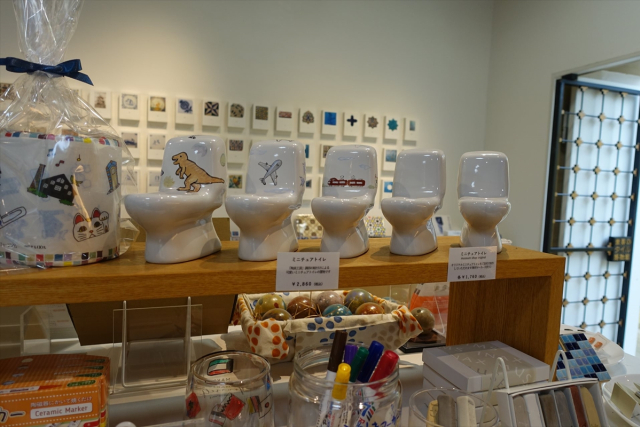
 We visit Kaiyodo Kappa Museum: dedicated to a yokai that loves cucumbers and human souls
We visit Kaiyodo Kappa Museum: dedicated to a yokai that loves cucumbers and human souls Japanese toilet paper collection opens our minds as we open our butts
Japanese toilet paper collection opens our minds as we open our butts We visit a train station in historical ninja town, see ninja trick art, and become ninjas ourselves
We visit a train station in historical ninja town, see ninja trick art, and become ninjas ourselves Japanese public toilet in Tokyo is more like a fancy restaurant than a restroom
Japanese public toilet in Tokyo is more like a fancy restaurant than a restroom PooPaint Toilet paper lets you make art with your poop
PooPaint Toilet paper lets you make art with your poop How to order snacks on a Shinkansen bullet train in Japan
How to order snacks on a Shinkansen bullet train in Japan Japan’s new difficult-to-drink-from beer glass protects your liver, but it’s a brutal experience
Japan’s new difficult-to-drink-from beer glass protects your liver, but it’s a brutal experience Burger King Japan suddenly adds Dr. Pepper and Dr. Pepper floats to its menu nationwide
Burger King Japan suddenly adds Dr. Pepper and Dr. Pepper floats to its menu nationwide Demon Slayer: Kimetsu no Yaiba gets new roller coaster attractions and food at Universal Studios Japan
Demon Slayer: Kimetsu no Yaiba gets new roller coaster attractions and food at Universal Studios Japan Hello, cosmetics! Clinique teams up with Hello Kitty this summer for first-time collaboration
Hello, cosmetics! Clinique teams up with Hello Kitty this summer for first-time collaboration Kyoto Tower mascot termination reveals dark side behind cute Japanese characters
Kyoto Tower mascot termination reveals dark side behind cute Japanese characters Nintendo history you can feel – Super NES, N64, and GameCube controllers become capsule toys
Nintendo history you can feel – Super NES, N64, and GameCube controllers become capsule toys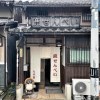 This Nara workshop has been making deer crackers for more than 100 years and offers tours【Photos】
This Nara workshop has been making deer crackers for more than 100 years and offers tours【Photos】 High-fashion Totoro cuddle purse is like an elegant stroll in the forest【Photos】
High-fashion Totoro cuddle purse is like an elegant stroll in the forest【Photos】 Legendary Melon Bread by Tokyo Banana returns after 20-year absence【Taste Test】
Legendary Melon Bread by Tokyo Banana returns after 20-year absence【Taste Test】 “The most Delicious Cup Noodle in history” – Japan’s French Cup Noodle wins our heart【Taste test】
“The most Delicious Cup Noodle in history” – Japan’s French Cup Noodle wins our heart【Taste test】 Starbucks releases a cute Frappuccino and Unicorn Cake…but not in Japan
Starbucks releases a cute Frappuccino and Unicorn Cake…but not in Japan McDonald’s Japan’s Soft Twist Tower: A phantom ice cream only sold at select branches
McDonald’s Japan’s Soft Twist Tower: A phantom ice cream only sold at select branches Yabai Ramen: What makes this Japanese ramen so dangerous?
Yabai Ramen: What makes this Japanese ramen so dangerous? Finally! Nintendo Japan expands Switch 8-bit controller sales to everybody, Online member or not
Finally! Nintendo Japan expands Switch 8-bit controller sales to everybody, Online member or not Japanese government wants to build luxury resorts in all national parks for foreign tourists
Japanese government wants to build luxury resorts in all national parks for foreign tourists To combat declining birth rate, Japan to begin offering “Breeding Visas” to foreigners
To combat declining birth rate, Japan to begin offering “Breeding Visas” to foreigners 10 things you should buy at 7-Eleven in Japan
10 things you should buy at 7-Eleven in Japan Studio Ghibli releases anime heroine cosplay dresses that are super comfy to wear
Studio Ghibli releases anime heroine cosplay dresses that are super comfy to wear Woman charged for driving suitcase without a license in Osaka
Woman charged for driving suitcase without a license in Osaka Studio Ghibli unveils My Neighbour Totoro miniature house model
Studio Ghibli unveils My Neighbour Totoro miniature house model Kyoto experiencing problems with foreign tourists not paying for bus fares, but not on purpose
Kyoto experiencing problems with foreign tourists not paying for bus fares, but not on purpose Fighting mild hunger with a Japanese soda that turns into jelly in the stomach【Taste test】
Fighting mild hunger with a Japanese soda that turns into jelly in the stomach【Taste test】 Studio Ghibli’s Howl’s Moving Castle tapestry unveiled in Japan for first time
Studio Ghibli’s Howl’s Moving Castle tapestry unveiled in Japan for first time McDonald’s new Happy Meals offer up cute and practical Sanrio lifestyle goods
McDonald’s new Happy Meals offer up cute and practical Sanrio lifestyle goods Sales of Japan’s most convenient train ticket/shopping payment cards suspended indefinitely
Sales of Japan’s most convenient train ticket/shopping payment cards suspended indefinitely Sold-out Studio Ghibli desktop humidifiers are back so Totoro can help you through the dry season
Sold-out Studio Ghibli desktop humidifiers are back so Totoro can help you through the dry season Japanese government to make first change to romanization spelling rules since the 1950s
Japanese government to make first change to romanization spelling rules since the 1950s Foreigner’s request for help in Tokyo makes us sad for the state of society
Foreigner’s request for help in Tokyo makes us sad for the state of society Ghibli founders Toshio Suzuki and Hayao Miyazaki contribute to Japanese whisky Totoro label design
Ghibli founders Toshio Suzuki and Hayao Miyazaki contribute to Japanese whisky Totoro label design Doraemon found buried at sea as scene from 1993 anime becomes real life【Photos】
Doraemon found buried at sea as scene from 1993 anime becomes real life【Photos】 Tokyo’s most famous Starbucks is closed
Tokyo’s most famous Starbucks is closed Princesses, fruits, and blacksmiths: Study reveals the 30 most unusual family names in Japan
Princesses, fruits, and blacksmiths: Study reveals the 30 most unusual family names in Japan Weird Japanese vending machine find gives us unique sweet potato sweets
Weird Japanese vending machine find gives us unique sweet potato sweets Enjoy the sweet taste of autumn with the help of Kirby and pals
Enjoy the sweet taste of autumn with the help of Kirby and pals Japanese squat toilet plastic model kit: Weird, gross, or both?【Photos】
Japanese squat toilet plastic model kit: Weird, gross, or both?【Photos】 The most expensive ice cream in Japan? Metallic soft serve frays the nerves of staff who make it
The most expensive ice cream in Japan? Metallic soft serve frays the nerves of staff who make it Is a camping toaster from Daiso any good? We tested one so you don’t have to!
Is a camping toaster from Daiso any good? We tested one so you don’t have to! Daiso vs. Seria: Which sells the better egg white whipper? We find out【SoraKitchen】
Daiso vs. Seria: Which sells the better egg white whipper? We find out【SoraKitchen】 Japanese convenience store ice cream wins gold for reporter at the Tokyo Olympics
Japanese convenience store ice cream wins gold for reporter at the Tokyo Olympics Shaved ice? No thanks – we’re having a shaved milkshake at this Japanese cafe instead!【Photos】
Shaved ice? No thanks – we’re having a shaved milkshake at this Japanese cafe instead!【Photos】 We hunt for Dom Pérignon in these wine fukubukuro lucky bag boxes from Kaldi
We hunt for Dom Pérignon in these wine fukubukuro lucky bag boxes from Kaldi Tokyo’s Ghibli museum to reopen this month, but only for one group of people
Tokyo’s Ghibli museum to reopen this month, but only for one group of people Vending machine noodle ice cream: A retro icon in Japan brings joy to a new generation
Vending machine noodle ice cream: A retro icon in Japan brings joy to a new generation Making a traditional Japanese dessert from “heaven grass”【Photos】
Making a traditional Japanese dessert from “heaven grass”【Photos】 Japan travel warning: These are not baby wipes, so don’t use them to wipe your butt
Japan travel warning: These are not baby wipes, so don’t use them to wipe your butt Visit a pepper-packed tribute to spiciness tucked away in an Osaka food court
Visit a pepper-packed tribute to spiciness tucked away in an Osaka food court Puyo Puyo Manju return after 21 years…and our Puyo Puyo fan reporter achieves a childhood dream
Puyo Puyo Manju return after 21 years…and our Puyo Puyo fan reporter achieves a childhood dream Kyoto village dealing with poo on floor as Japanese-style toilets confuse foreign travelers
Kyoto village dealing with poo on floor as Japanese-style toilets confuse foreign travelers
Leave a Reply